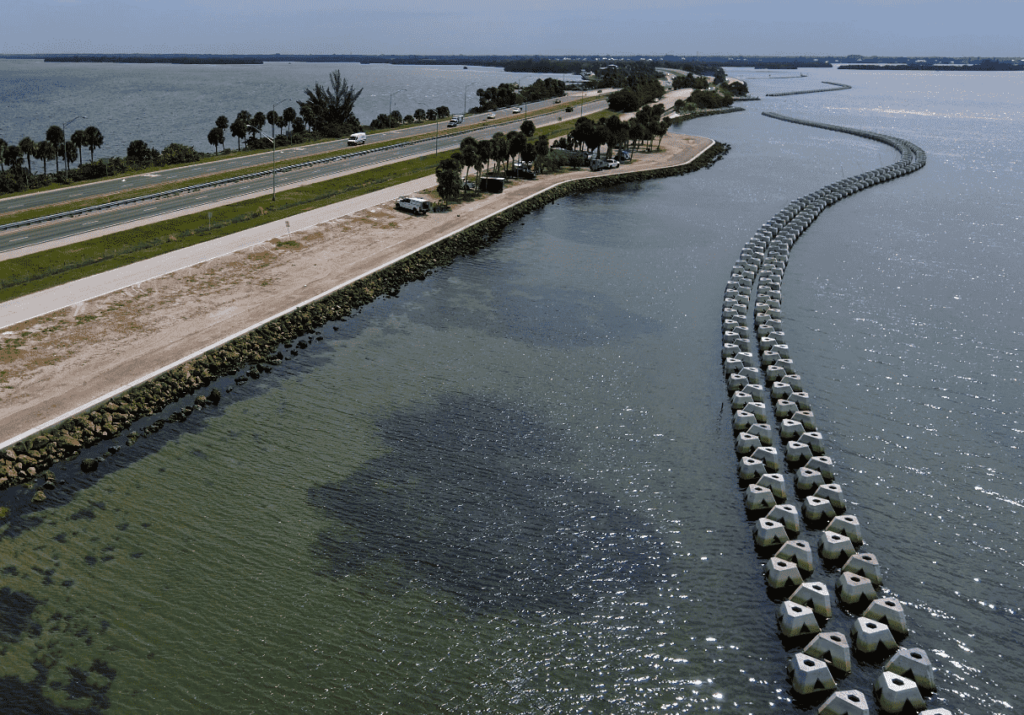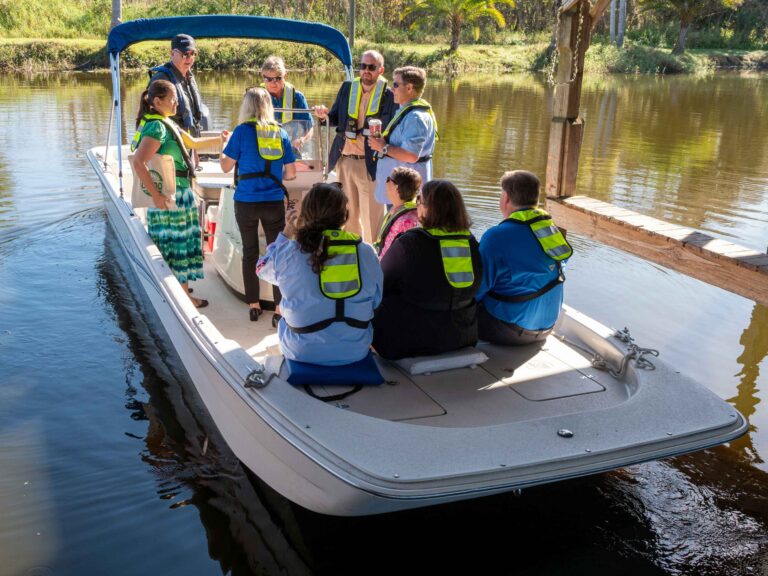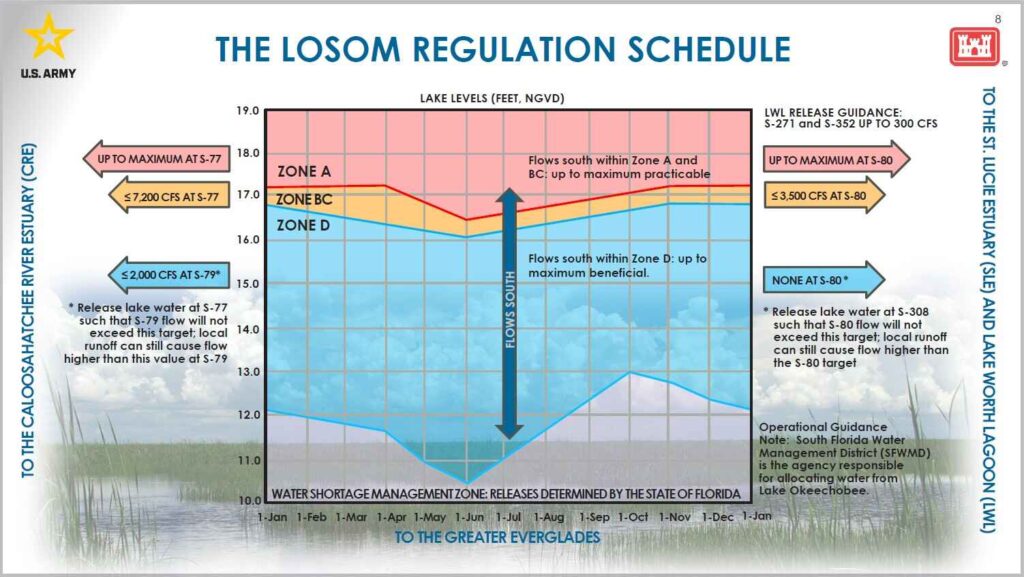By L.K. NANDAM
The Sunshine Skyway Bridge, which connects Manatee and Pinellas counties, is Florida’s flagship bridge. It’s a vital connector that allows freight, commuters, and tourists to travel freely throughout the region. Cruise ships and containerships pass under the iconic structure as they make their way from the Port of Tampa to destinations all over the world.


FDOT has made strategic investments in safety measures to protect the bridge. One of the most notable features is the installation of ‘Dolphins,’ which serve as physical barriers and rock islands that completely surround the main channel supports and reach all the way to the sea floor. While these protect the bridge from vessel strikes, FDOT determined a unique approach was necessary to ensure the Sunshine Skyway remains secure for years to come.
Due to the ongoing erosion issues along the west side of the bridge near the Manatee County fishing pier, and the need for seagrass mitigation for future project needs, the FDOT Drainage and Permitting team developed the idea of utilizing two breakwaters to provide wave attenuation to prevent the erosion of the recently repaired seawall and fishing pier access road, as well as allowing seagrass growth behind the breakwaters to satisfy future seagrass mitigation needs and enhance the Tampa Bay marine estuary.
Wave Attenuating Devices (WADs), which are a proprietary product of Living Shoreline Solutions, were preferred for this project in lieu of traditional breakwaters using rubble rip-rap, or large boulders, due to the deeper waters and large physical footprint being too costly to construct. Additionally, WADs promote seagrass growth, provide fish habitat, improve water clarity, and increase protection during hurricanes by attenuating up to 90 percent of the wave energy. Despite roughly 20 years of use in various locations around the country, FDOT’s use of the WADs for this project marks the first time any state or federal-level agency in the U.S. has deployed them.


The design team’s use of the WADs system versus a more traditional breakwater has proven to be a faster, better, and cheaper method of constructing breakwaters while exceeding the wave attenuation requirements for the project. Despite facing permitting challenges, FDOT staff and the engineers were able to acquire the permits (via the Southwest Florida Water Management District and U.S. Army Corps of Engineers) on schedule.
This allowed the contractor to complete most of the construction just before Hurricane Idalia in August 2023 by immediately testing the WAD system prior to landfall. The WADs have far exceeded expectations for how quickly marine life has migrated to the WADs and the new seagrass growth that has occurred behind the WADs. Residents and visitors have discovered these newly created habitats as excellent snorkel destinations that will bring benefits and enjoyment for years to come.
The project has been successful as it improves the resilience of the I-275 connector between Manatee and Pinellas counties with a total of 844 WAD units placed in the water. Not only did it solve the erosion issue, but the WADs withstood the storm surge from Hurricane Idalia and provides a fish habitat and new seagrass for the area, which are vital to Florida’s sportfishing and ecotourism industries.
FDOT is proud of the innovative thinking of our design and construction teams that led to this unique solution for Tampa Bay.
L.K. Nandam, P.E. is FDOT District 1 Secretary























